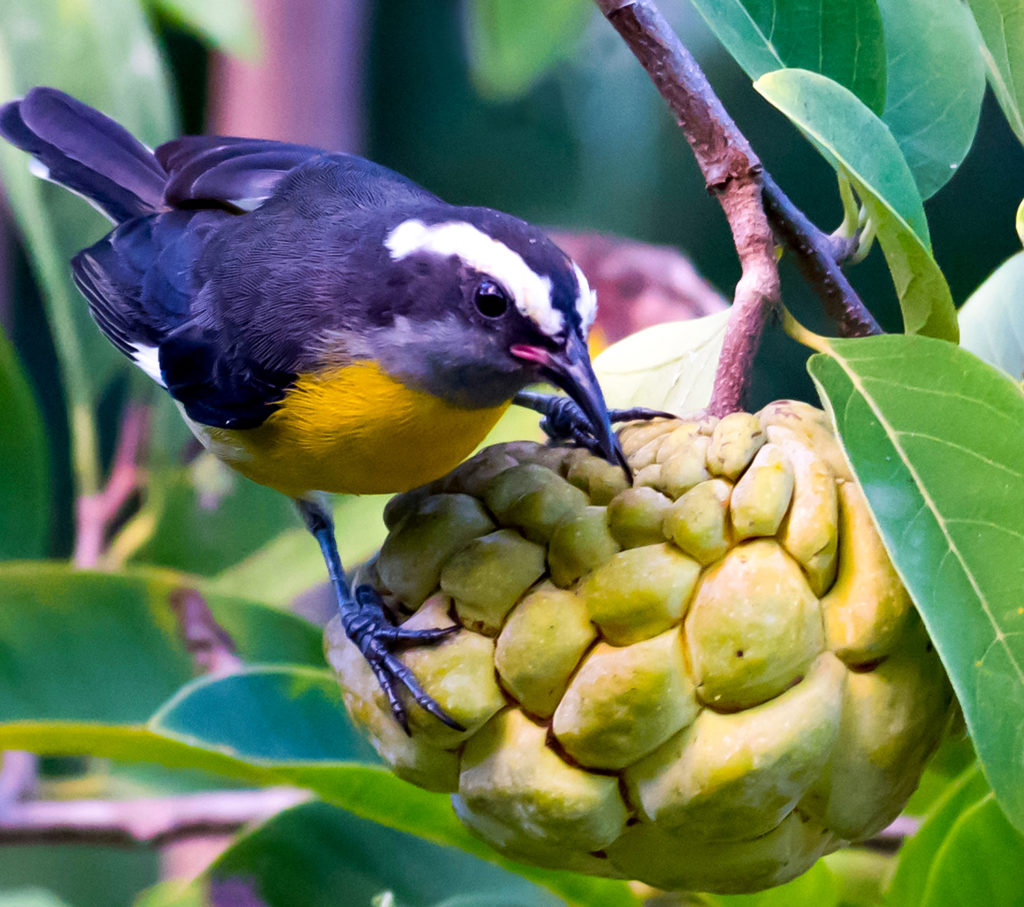
There’s hardly anything better than picking fruit off the trees in your own yard.
After the hurricanes, one of our sugar apple trees was broken off and leafless. However, unlike the mango tree and several other fruit trees, it was not permanently lost. A couple of years later it produced a remarkable amount of fruit on the remaining lower branches. Now the still-short tree is full of sugar apples again, and we are definitely thankful that it has recovered.
The ripe sugar apple fruits are wonderfully sweet and custardy. However they don’t all get ripe at the same time, so you have to check them frequently to see if they are soft enough to harvest. Pick them too soon and they don’t ripen properly. Wait too long and the birds get to them first.
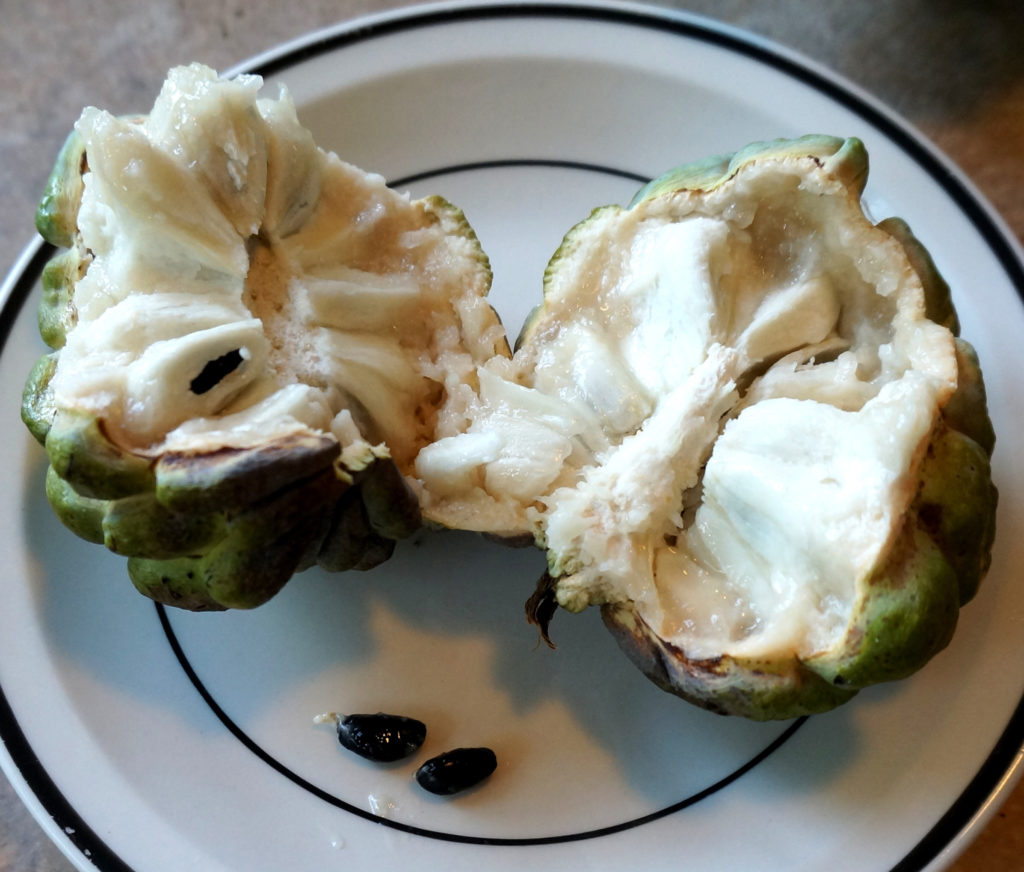
I have been saving the sugar apple seeds and raising them in pots to plant in our yard – and to give away to other people who lost trees. Sometimes birds will also spread the sugar apple seeds around, and may actually have better sense than I do about where to leave the seeds so that they thrive.
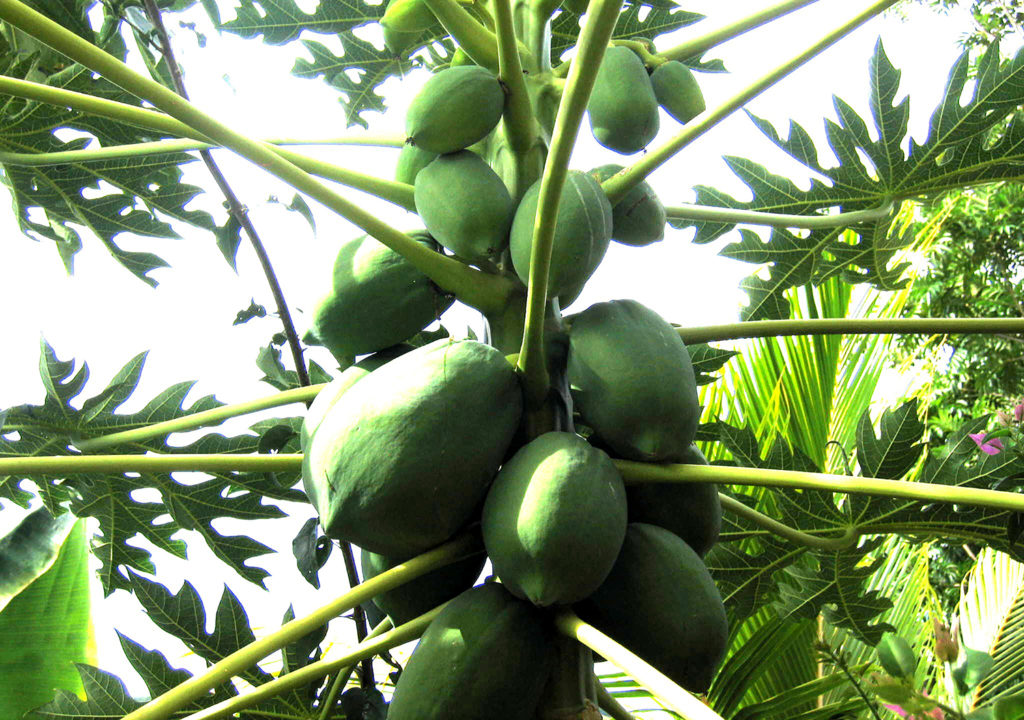
We also have some papayas. These plants are giant herbs, not woody trees, and don’t usually last more than a few years even without storms. The fruits are delicious and also very good for your health – reputedly reducing your blood pressure and preventing heart disease, diabetes and cancer. How great to just go out and get one from the yard for breakfast or dinner.
The pearly-eyed thrashers compete with me for the ripening papayas. I suppose it is useful that they help spread the seeds around, but really, I would prefer to do that myself. Still, I’m not always quick enough to get to the papayas before the thrashers, and sometimes I pick them while they are still green, otherwise I won’t get any at all. You can eat them green, but they don’t taste as good to me. I prefer to put them in a paper bag on the counter until they ripen.
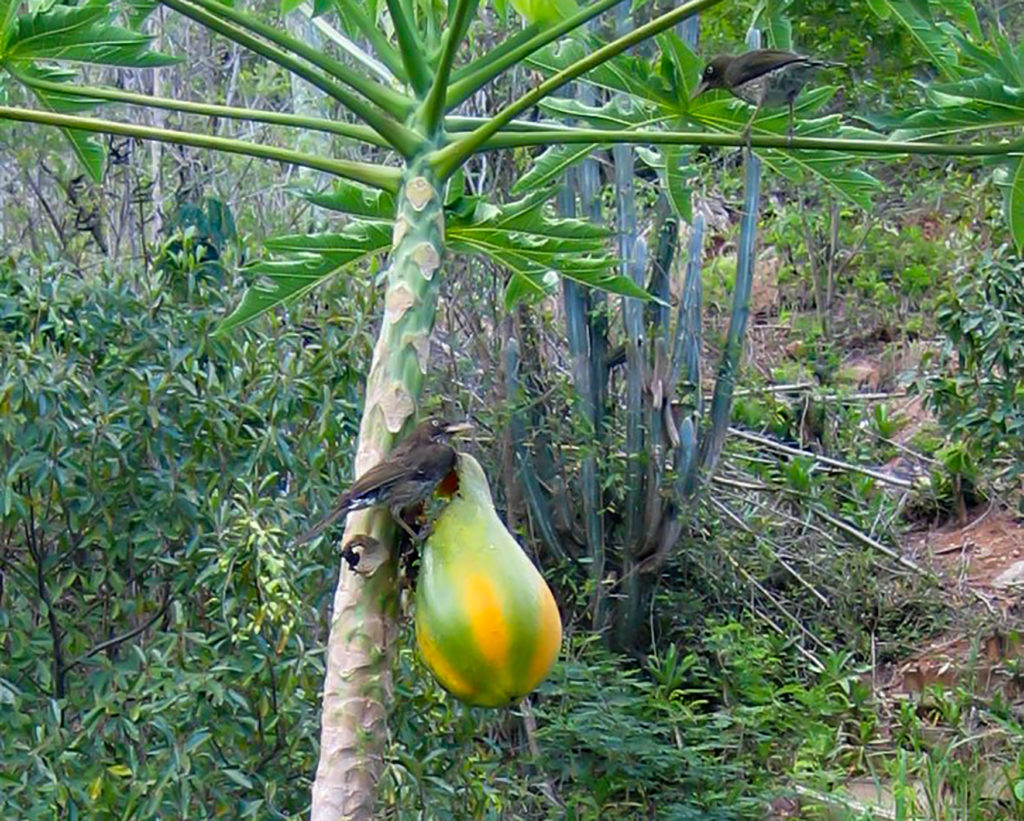
I was surprised that my passion fruit vines survived over the summer while I was gone. Apparently, there was enough rain for them to flourish, and the deer left them alone. Their flowers are amazingly beautiful, and the ripening passion fruits look like shiny green Christmas tree balls.
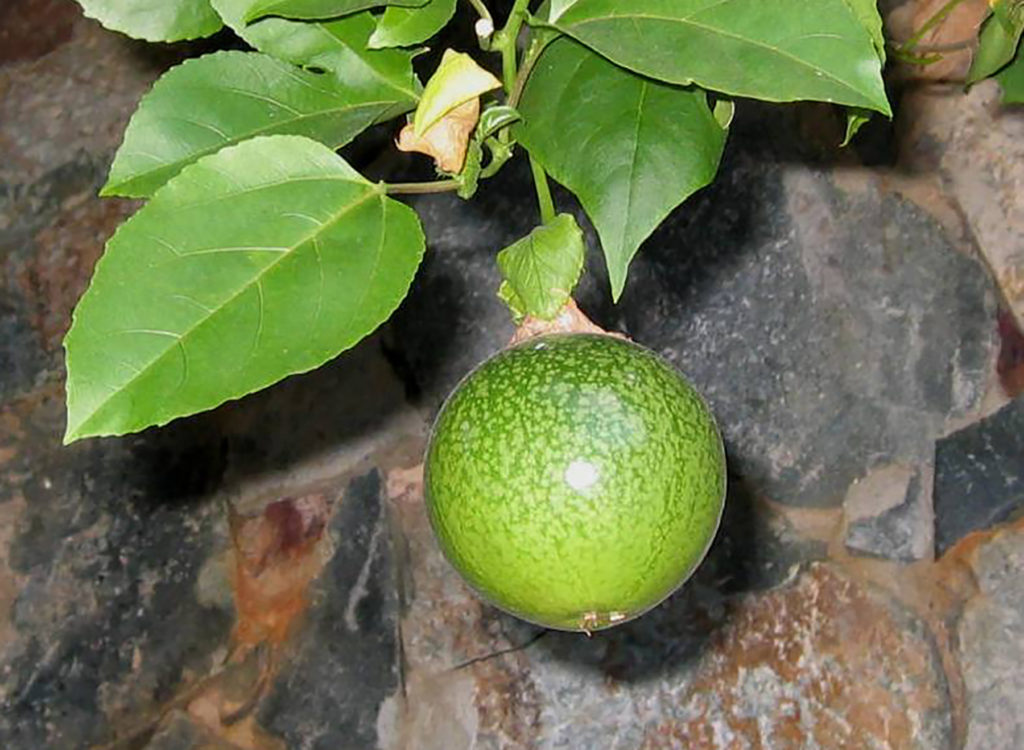
We usually eat the passion fruit pulp right out of the skin, seeds and all. But sometimes we use it to flavor drinks.
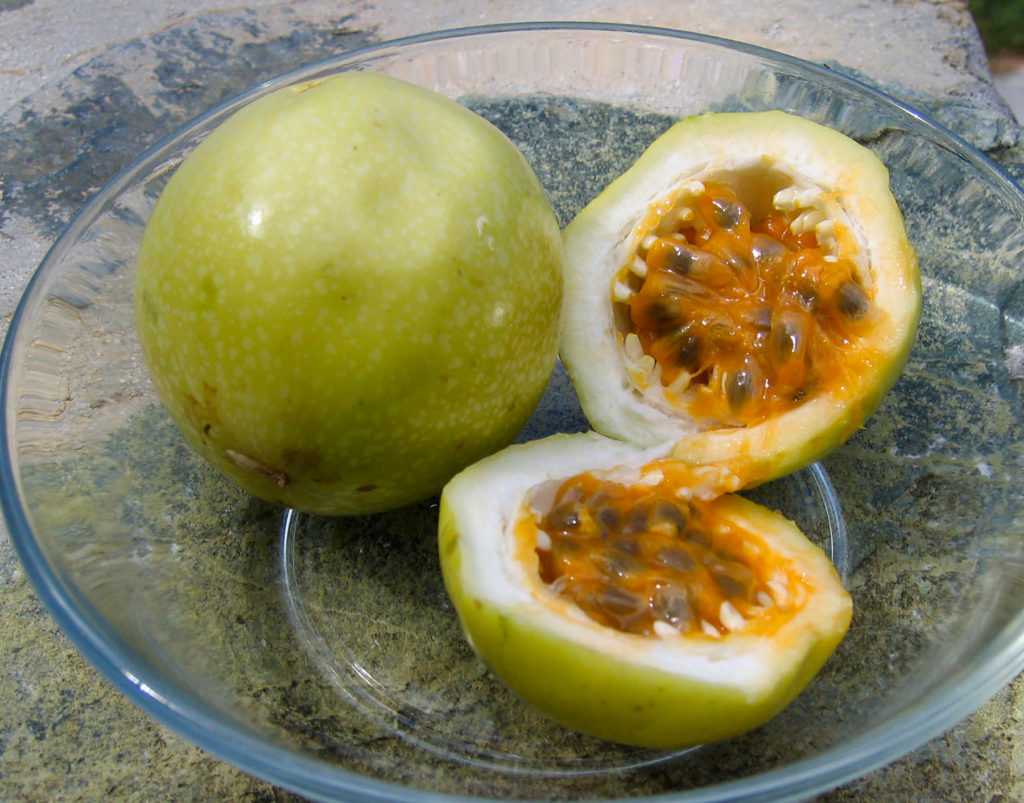
Meanwhile, the two tamarind trees are full of juicy pods. They were on the land before we came, and have gotten really tall so it’s hard to reach the fruit. It’s worth it to try to grab some though. They are tangy if not fully ripe, but can be wonderfully sweet if you catch them just right.
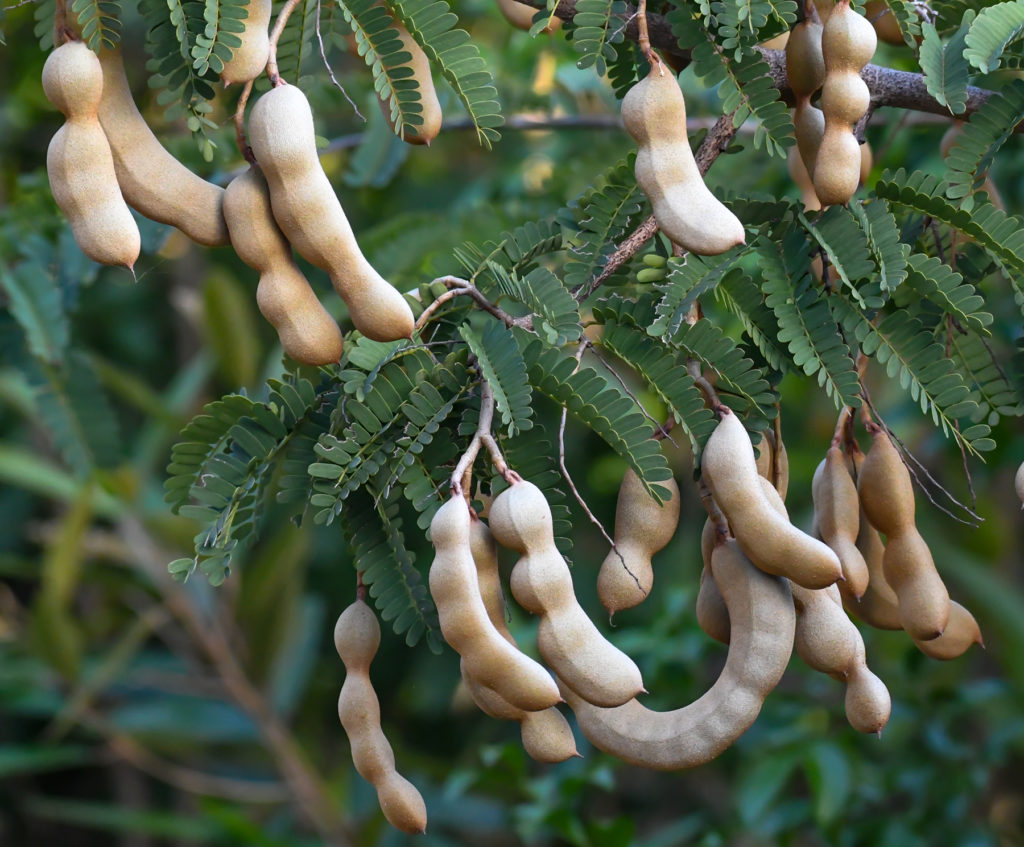
Only one of the coconut trees we planted is still alive. The others succumbed to hurricanes and droughts. We worried about this one, but now it has rallied.
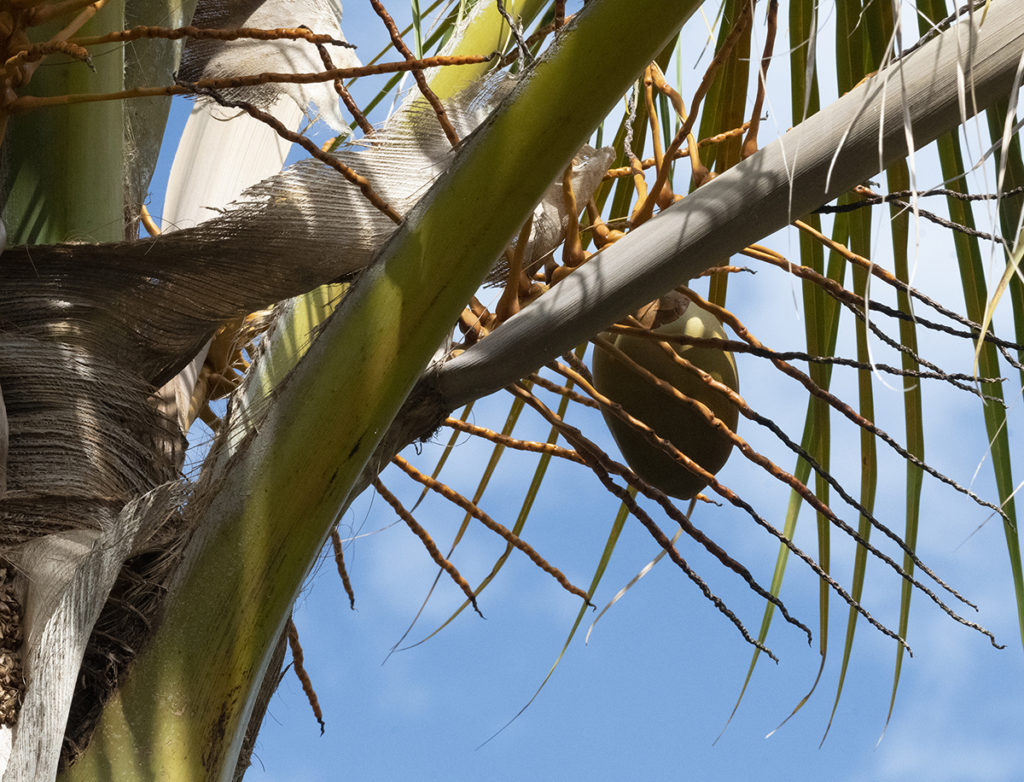
Besides providing tasty coconut water and sweet creamy meat, this tree also provides opportunities for our sons to show off their island climbing skills and machete work.
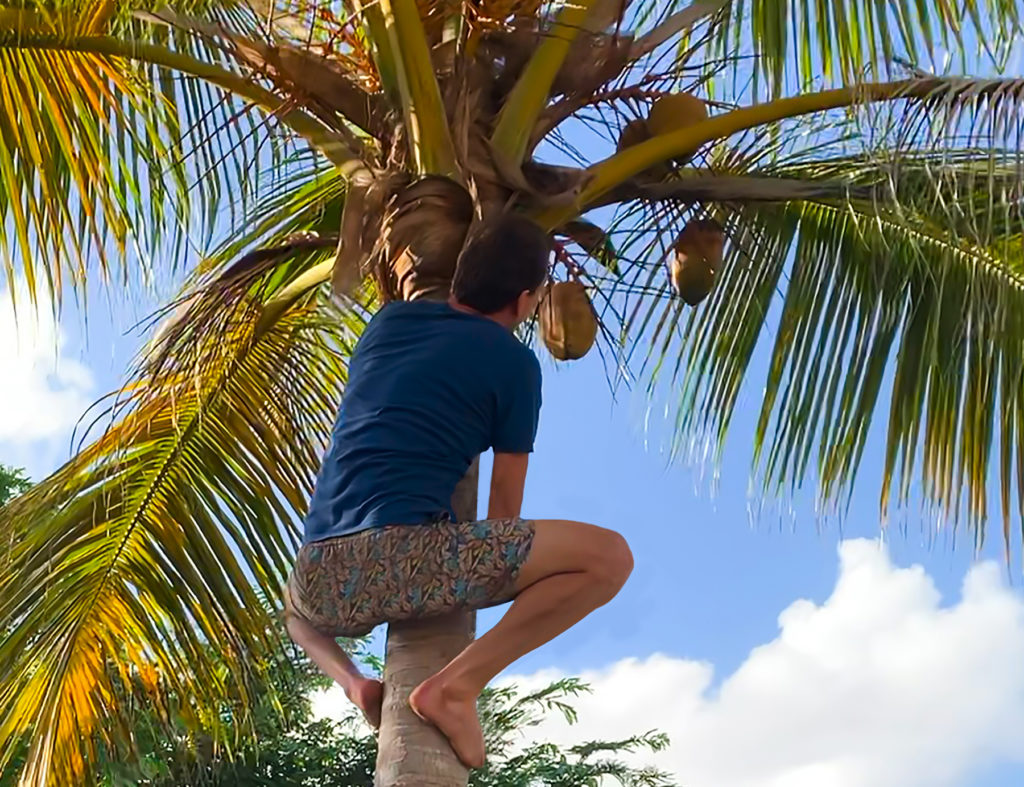
We are very grateful for the fruits of this season, and for another year of safety from storms.
— Gail Karlsson is an environmental lawyer, writer and photographer – author of “The Wild Life in an Island House,” plus the guide book “Learning About Trees and Plants – A Project of the Unitarian Universalist Fellowship of St. John.” See uufstjohn.com/treeproject and gvkarlsson.blogspot.com. Follow her on Instagram @gailkarlsson





